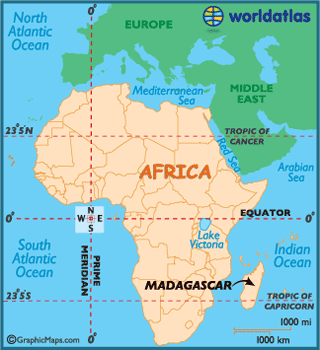Approximately 25 days, 22 hours, and 50 minutes ago I left
JFK to embark on a four-month jaunt to Ranomafana National Park in Madagascar.
Before I left, I spent a good amount of my time mentally preparing for what I
envisioned to be the culminating experience of my college years – marked not
only by its substantial length but also by the immensity of the work that
needed to be accomplished – but more on that later.
With that being said, lets get one thing out of the way;
Madagascar is not, nor should it ever be considered, “Africa.” Yes, Madagascar
is technically considered to be one of the 54 states that make up the continent;
however, it is in many ways completely different. There are no lions here. No
zebra. No hippos, giraffe, baboons, or rhinos. In fact, Madagascar is one of
the only places on Earth where there is not a single predator capable of
killing you – you’d be very hard sought to find such a place in the Sahara or
Congo.
 |
| Ambatalahi, Ranomafana |
I think that it all comes down to the way, which we as
humans perceive our lives and how everything is relative to the lens in which
we choose to view the world around us. It is funny really. Perspective is one
of the most fundamental human traits, yet we spend little to no time as a
society teaching the importance of breaking away from a singular outlook of the
world. I fear that Western society has become so caught up in the pursuit of
acquisition that any sense of becoming a true cosmopolitan has been lost; or at
least greatly hindered. By no means am I saying that I am above this or an
exception. It’s so easy to get caught up in the minutia of life and focus on
all of the things that we do not have, that we fall blind to all the beautiful
things we do: family, friends, love…
What would happen if we all just paused the game for a quick
second and thought about our lives from a holistic standpoint? Would we be
happy with the sacrifices we made along the way? Would we truly be satisfied
with ourselves? Or would we realize that we have just been part of a gigantic
endgame? Personally, I do not know the answer. I’m not even sure that I could
answer that question at this point in my life. What I do know is that I want my
life to amount to more than just a collection of superficial experiences and physical
“things.” Life is about forming truly meaningful relationships and bonds that
help you to become enlightened to the human dynamic. If at the end of the day,
the experiences of your life amount to no more then a assortment of photos and
souvenirs with no deep feeling behind it, one could beg the question: “Was it
worth it?” It’s something to think about as you – the reader – move through your
day to day.
 My time in Madagascar over the last few weeks has been split
between building the capacity of the laboratory on site and various excursions
into the rainforest and villages. The rainforest is – in a word – sublime. One
could easily compare it to Shangri-La or a Malagasy version of El-Dorado.
Within minutes of my first hike we saw a lemur: the Red-Fronted Brown Lemur.
For over an hour we were struggling to move around in the bush to get to a
perfect vantage point to capture a proper photo. It was almost as if he knew
have enthralling he was, only allowing us to take photos of him on his terms,
showing us his backside the rest of the time.
My time in Madagascar over the last few weeks has been split
between building the capacity of the laboratory on site and various excursions
into the rainforest and villages. The rainforest is – in a word – sublime. One
could easily compare it to Shangri-La or a Malagasy version of El-Dorado.
Within minutes of my first hike we saw a lemur: the Red-Fronted Brown Lemur.
For over an hour we were struggling to move around in the bush to get to a
perfect vantage point to capture a proper photo. It was almost as if he knew
have enthralling he was, only allowing us to take photos of him on his terms,
showing us his backside the rest of the time.
Over the next few weeks my species list would grow to include
a Sifaka Lemurs, Bamboo Lemurs, Red-Bellied Lemurs, countless mouse lemurs,
chameleons and a plethora of fascinating insects – my favorite being the
Madagascan Moon Moth. But nothing compares to the Aye-Aye and the effort we put
in to find it.
 |
| Madagascan Moon Moth |
Now, I could – and should – go into all of the trials and
tribulations of attempting to set up a functioning infectious disease
laboratory – being that this blog is meant to catalogue my “scientific
experience” abroad – in the middle of the rainforest, but instead I will sum it
up in two phrases for the interest of your time. First: nothing goes as planned.
And by nothing, I literally mean nothing. Second: have a damn good contingency
plan for when the shit hits the proverbial fan (pun intended).









